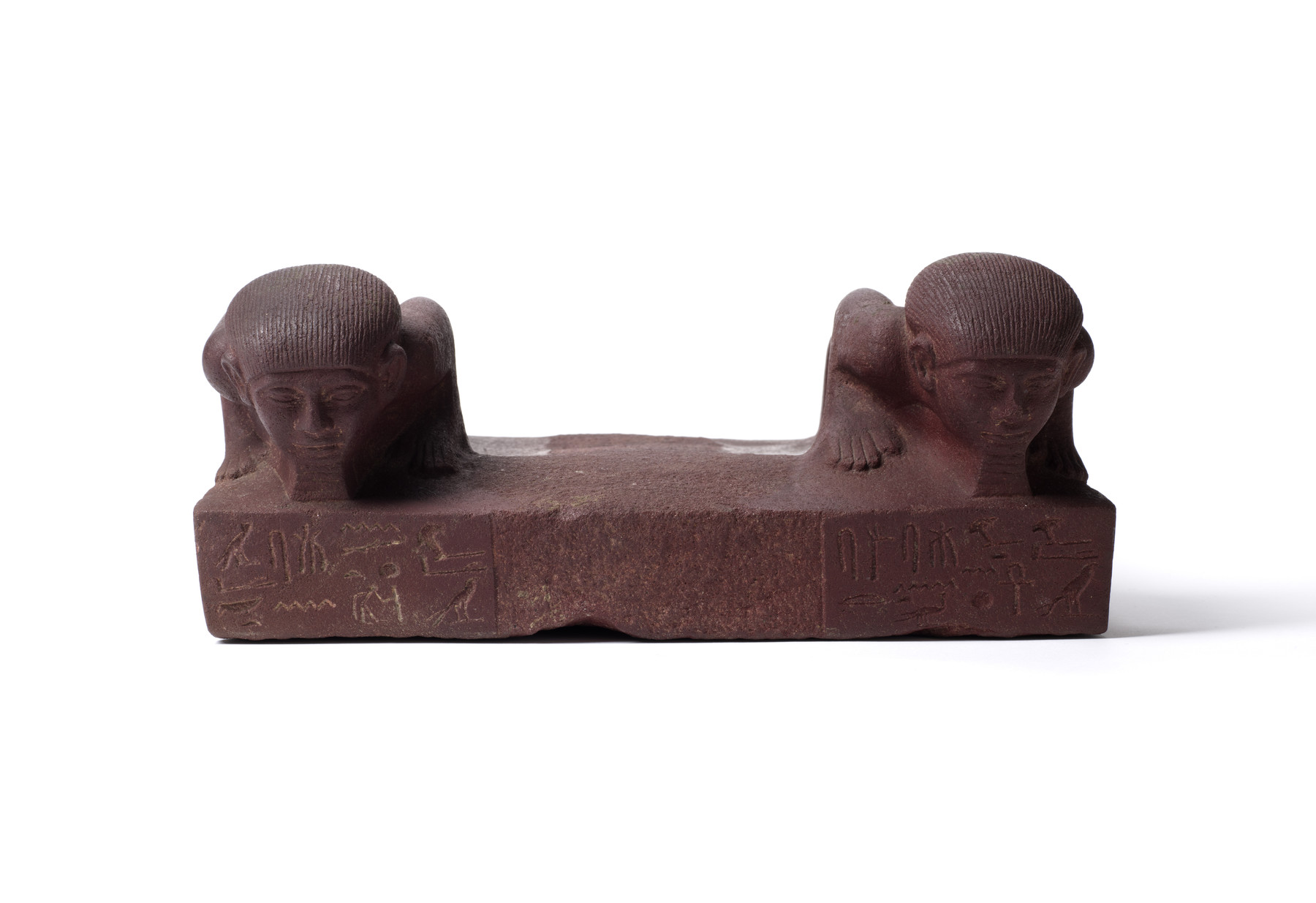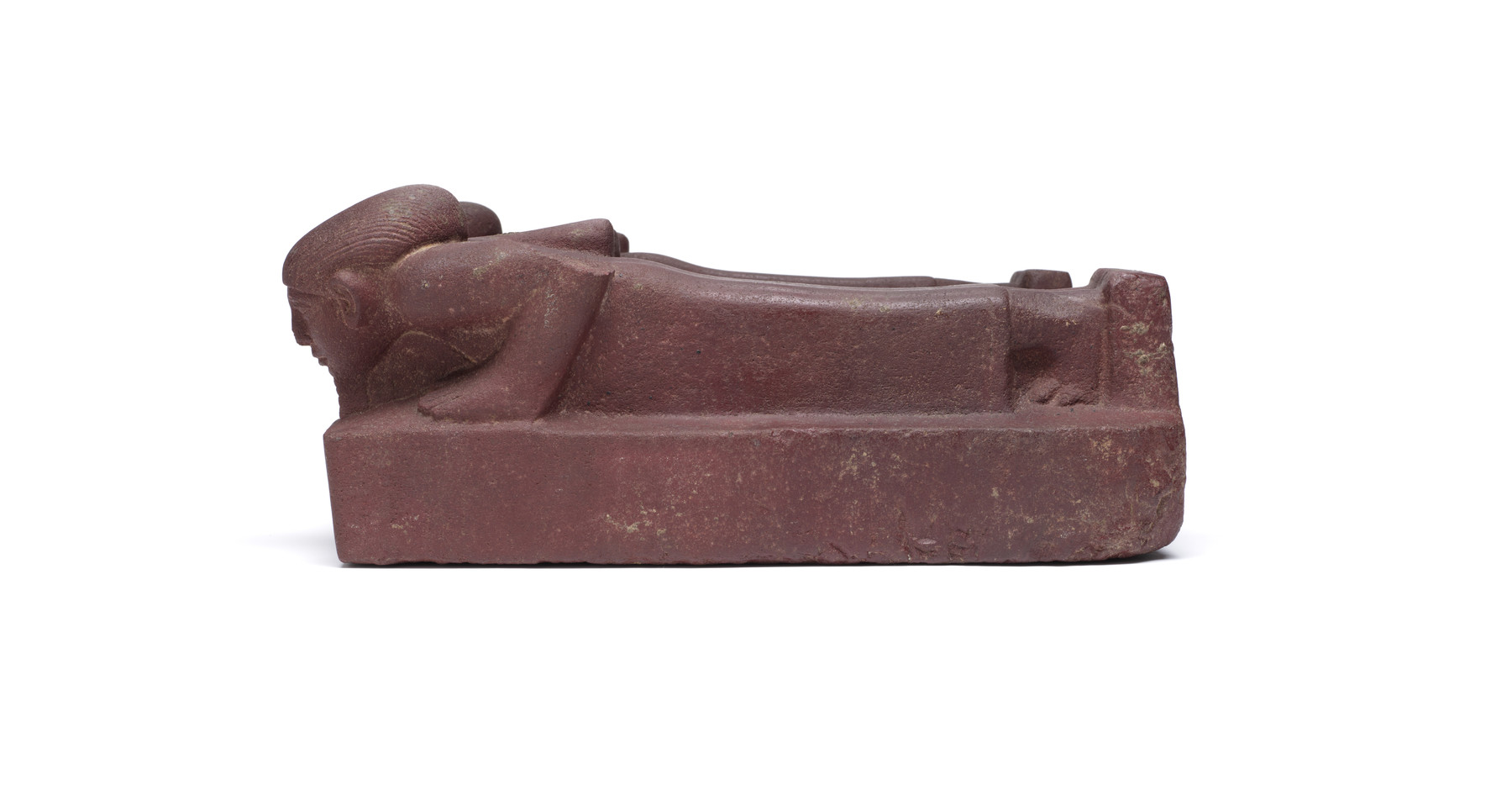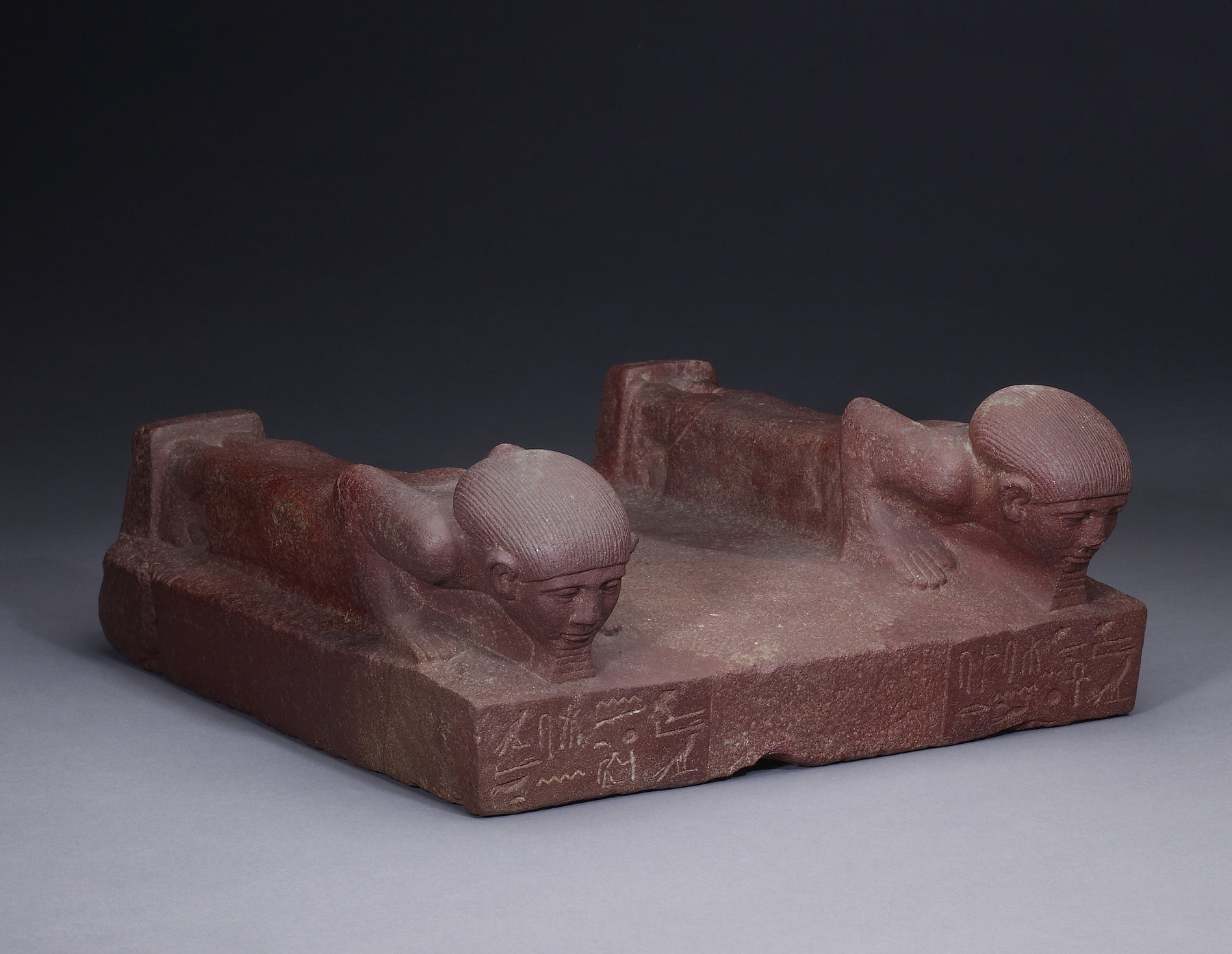Base with Two Prostrate Figures
(Ancient Egypt and Nubia )
Two provincial governors are shown prostrate before a higher authority. A third governor was once between them, but both his figure and his name have been removed. This unique sculpture must have been combined with the statue of a god or king. It is possible that the work was once part of a larger group that may have shown all the provincial governors of Upper and Lower Egypt. The removal of the middle figure may either have been a "damnatio memoriae" to destroy the commemoration of the depicted person, or to replace his image by the figure of another person.
Inscription
Provenance
Provenance (from the French provenir, 'to come from/forth') is the chronology of the ownership, custody, or location of a historical object. Learn more about provenance at the Walters.
Henry Walters, Baltimore [date and mode of acquisition unknown]; Walters Art Museum, 1931, by bequest.
Exhibitions
| 2015-2016 | Ancient Egypt Transformed: The Middle Kingdom. The Metropolitan Museum of Art, New York. |
| 2014-2015 | Senusret III. The conquering Pharaoh. Palais des Beaux Arts de Lille, Lille. |
| 2002-2003 | I Faraoni (The Pharaohs). Palazzo Grassi, Venice. |
Conservation
| Date | Description | Narrative |
|---|---|---|
| 10/1/1963 | Treatment | cleaned |
| 9/16/1998 | Examination | survey |
| 4/25/2002 | Loan Consideration | examined for loan |
| 9/1/2003 | Treatment | cleaned |
Geographies
Egypt, Dahshur
(Place of Origin)
Egypt, Faiyum (Place of Origin)
Measurements
H: 10 13/16 x W: 11 x D: 4 5/16 in. (27.5 x 28 x 11 cm)
Credit Line
Acquired by Henry Walters
Location in Museum
Accession Number
In libraries, galleries, museums, and archives, an accession number is a unique identifier assigned to each object in the collection.
In libraries, galleries, museums, and archives, an accession number is a unique identifier assigned to each object in the collection.
22.373














